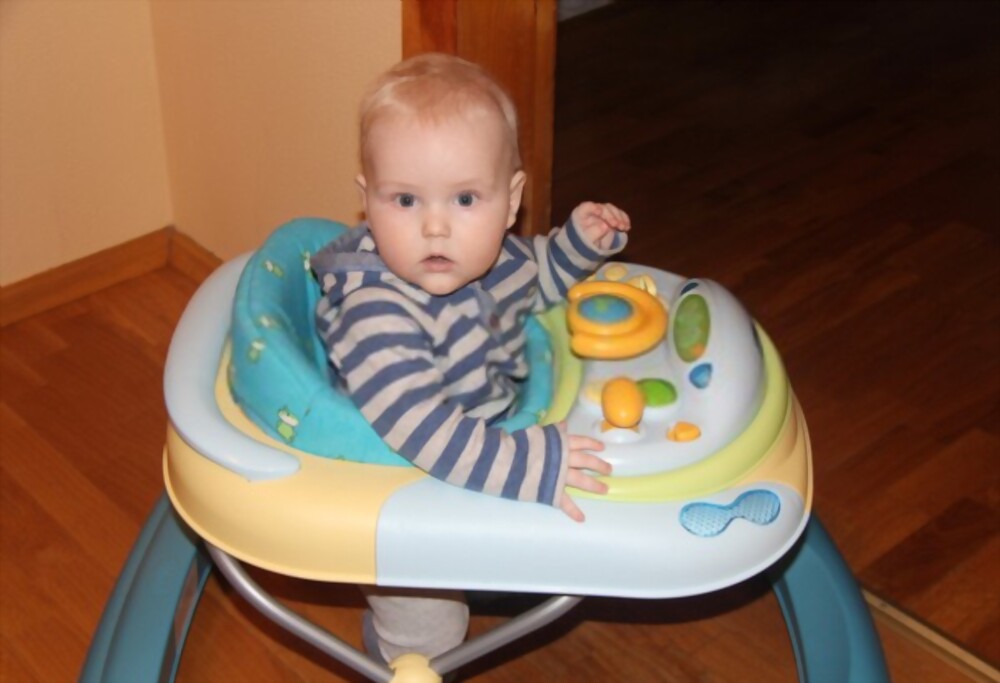The best baby walker will be one that is comfortable for your little one, has adjustable tensions, and has a durable frame. But, of course, you should consider all of the features before making a purchase as well- do they have toys? What about battery life or weight restrictions?”
The type you need can depend on how old your child gets when using them, which means there isn’t any hard rule saying what kind would work better than another. It’s However, it’s essential to know exactly where their feet might rest, so make sure not only does this seat recline but also if it telescopes outwards from sitting at table heights too.”
1. Different Types of Baby Walkers
Classic
As a new parent which one should I choose from Exersaucer VS Walker? Every new parent wants to know the answer? Classic baby walkers are an excellent way for parents to keep their little ones safe while they explore the world around them. These studies, yet portable devices come with an integrated seat that can easily remove if you need access between washes or during clean-up time later on.
Choose from classic designs like this Fisher-Price stadium model, which has plenty of toys attached, so it’s never dulled when your child wants downtime.
The best part about using these types of products is being able to experience elements such as balance through pretend play without any risk whatsoever – even though some brands may seem dangerous because there’s no ground below them.
2. Sit to stand
A sit-to-stand baby walker is an excellent option for parents on a tight budget. It’s less expensive than traditional walkers and does the same thing, making it an even better value! The primary purpose of this type of playpen is to get your little one up off them by encouraging them with music or sounds that will keep playing all day long.
If they’re feeling extra adventurous, there are detachable panels included in some models allowing you floor time as well.
3. Weight Restriction
Many people think that baby walkers can be used for around six months, but this is not true. Most manufacturers specify a weight limit of 25 pounds. If your child weighs more than 20, then it’s probably too heavy for one and could cause injury or even death in the event of an accident since they don’t have safety features like seat belts that stop infants from falling out.
When activated by sensors upon impact with something complex such as ground beneath them during movement while being carried swiftly forward over an uneven surface where every ounce counts.
Most injuries related to the use of baby walkers are caused by improper use. Parents who do not monitor their children while they play or follow instructions can lead them into dangerous situations like sitting in one too long.
Resulting in it potentially trapping them inside when weights exceed the maximum limit, preventing airflow needed for survival.
The collapse mode is often referred to as “sitting too high syndrome,” where pressure on the shoulders compresses the chest causing uneven distribution around the heart, leading to irregular rhythm (PVC).
4. Baby Walker Safety Tips
The most serious dangers associated with baby walkers are rolling downstairs, resulting in severe head injuries and broken bones. To combat this risk of damage to your child, if you use one at home or when walking around on uneven surfaces such as sidewalks where there is no railing for support. So, it’s essential to make sure the space has adequate Pediatrics care and have ways out before using them.
It’s no secret that baby walkers pose significant risks for your little one. As a parent, you can eliminate the risk of their favorite activity rolling downstairs by never allowing them to use it alone and always having an adult near when in use (or not).
Baby walkers may seem like the perfect solution for parents who want to stay close with their children while giving them independence. However, this can be a risky proposition because they open up new dangers you might not have thought about. For example: if your baby grabs onto something she shouldn’t – say tablecloths off of tables or pot handles near stoves–her skin could get burned by hot surfaces and even lead to bruising.
Additionally, keep an eye out on how far away from herself/others’ furniture her little feet are walking; it would never do any good if his fingers got too close guarded flame after all. The best way around these problems?
